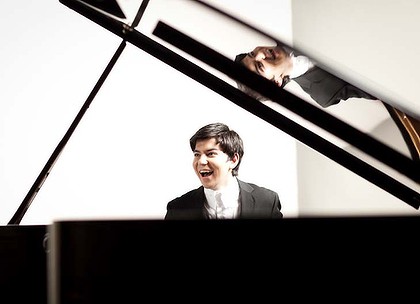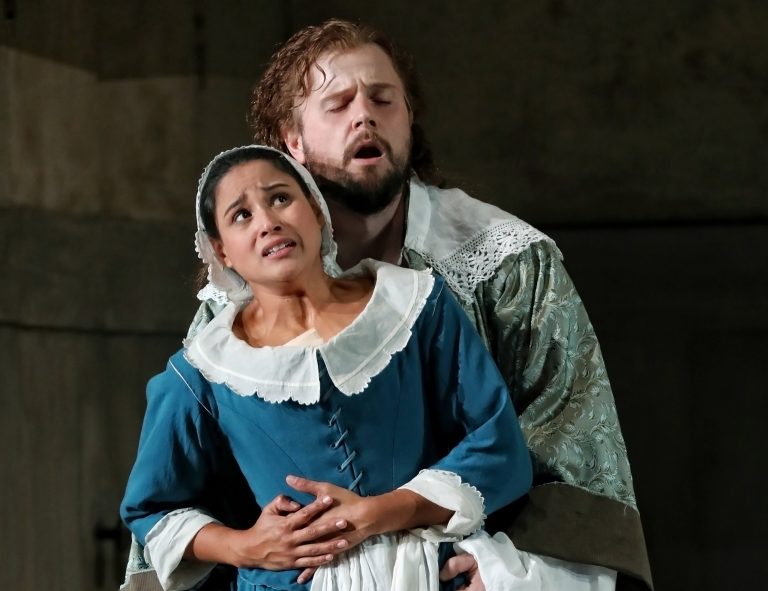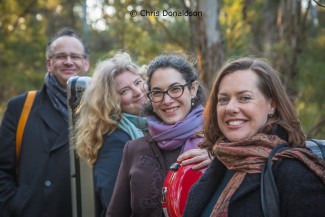CD Review: Amuse-Bouche/ I Fagiolini

I Fagiolini, the British vocal ensemble directed and conducted by Robert Hollingworth, celebrates its thirtieth anniversary with a new recording, Amuse-Bouche (Decca Classics 478 9394), a 29 track collection of ‘French choral delicacies’ from the late 19th and early 20th centuries, released in April 2016. To highlight the Australian connections, I Fagiolini toured Australia in 2015 for Musica Viva and also collaborated with the Australian circus company Circa in a production for six acrobats and nine singers, How Like an Angel.
Food has had a perennial association with music and Amuse-Bouche literally translates to ‘amusement for the mouth’ or more practically, ‘bite-sized hors d’œuvre which are selected for the patron by the chef.’ As well as featuring gastronomically inspired music, the CD contains other choral selections, music for solo piano and a transcription of a piano concerto for piano and voices.
The CD in fact, opens with a 26 second sound effect Pro Fumo which evokes the striking of a match and a fire springing to life. Is it a flame for cooking or is it to light the cigarette of the singer of Poulenc’s Hôtel, who, inebriated with fumes desists from work and simply wants to smoke all day? A hedonistic thought. It is the second of five Banalités Poulenc and is sung with heady langour by five of the Fagiolini, accompanied at the piano by Anna Marklund.
Jean Françaix’s Ode à la gastronomie is a musical painting of the words of Physiologie du goût (The Physiology of Taste) by the French lawyer, politician, epicure and gastronome Jean Anthelme Brillat-Savarin (1755 – 1826), after whom the dessert was named and who pioneered the gastronomic essay. The words are irreverent and full-blooded, brimming with satire, onomatopoeia and puns. Nothing is sacred. Francaix’s witty music and the rendition by the twelve singers meet the humour in the words all the way to the bilious representation of ‘storms in (the) intestines.’
Pianist Anna Marklund performs Satie’s whimsical Gnossienne numbers 3,4 and 5, interspersed amongst the choral items, serving as palate cleansers. As a singer, she performs as Anna Crookes and is a founding member of I Fagiolini. As a pianist she won the BBC Young Musician Award in 1982, aged just 17. These cameos, performed with simple clarity and just a splash of rubato are indeed a perfect foil to the more complex textures of the choral works which they throw into relief.
The second substantial work on Amuse– Bouche is Le Cantique des cantiques by Daniel-Lesur for 12 voices for which the voices of I Fagiolini are joined by another 8 singers. It is an a capella seven movement cantata that sets the unashamedly erotic text of the allegorical Songs of Solomon, Latin verse and words from the New Testament. The music harks back as it looks forward. The opening Alleluia is grounded in a pedal point over which hovers a chant reminiscent of Renaissance polyphony. The voice of the turtle-dove appears in the second song The Voice of the Beloved. Throughout the cantata, there are moments of mysticism, intensely layered lines and tingling dissonances which resolve to radiant harmonies, climaxing in the great passion that is the union of Christ and the Church.
Just four voices convene for a nostalgic and elegantly melismatic rendering of Milhaud’s Deux poèmes which transport us to Guadeloupe in the West Indies, birthplace of Alexis Leger, the poet whose text is used in the first song Éloge V (Eulogy V) and to the island of Montserrat, location of René Chalupt’s poem Le Brick (The Brig).
Poulenc’s Sept chansons and Un soir de neige also pay homage to the Renaissance. The Sept chanson were written after hearing a concert of Monteverdi’s madrigals and motets. Using words by Paul Éluard and Guillaume Apollinaire they carry the theme of corporeal pleasure sung with zest by the ensemble.
Un soir de neige is a complete antithesis in mood, using four poems from Éluard this 6 part chamber cantata elicits as potent a visceral response as the other tracks – but it is a bleak one. In their far more sombre delivery the ensemble draws fear and desolation at the end of life, rather than at its potent prime.
For the final course, the ensemble invites the listener to adjourn to the drawing room with ‘coffee and liqueurs’ for a novel arrangement by bass Fagiolino Roderick Williams of the Adagio assai from Ravel’s Piano Concerto in G major. Williams’ brief was to arrange the orchestral parts for voice, underpinned with text by Rimbaud and Baudelaire. In the opening bars the voice is in unison with the piano before diverging into sensual harmonies settling into a radiant an ‘afterglow.’
The project was recorded in June/July 2015 at All Saints Church in Tooting, London; the CD liner contains comprehensive insights in English, French and German from Robert Hollingworth, Jacques Francaix (son of the composer) and musicologist Hugh Keyte. There are photos from the recording sessions, the full text in French with English translations and the cover features the unmistakeable image of the mouth of a young and seductive Brigitte Bardot.
Amuse-Bouche sorely tempts the pleasure of the flesh with these choice selections, superbly performed.
Shamistha de Soysa for SoundsLikeSydney©







